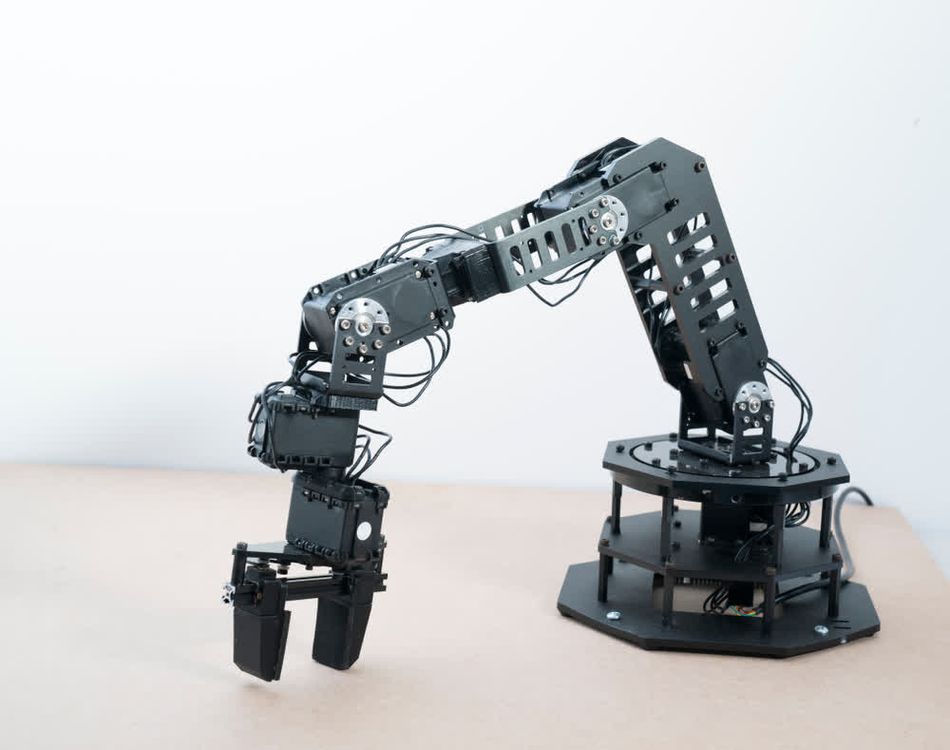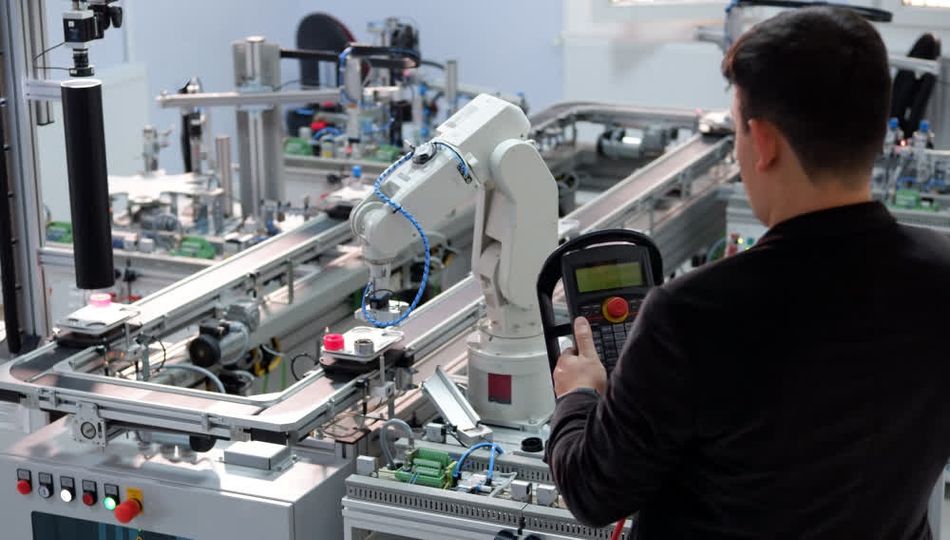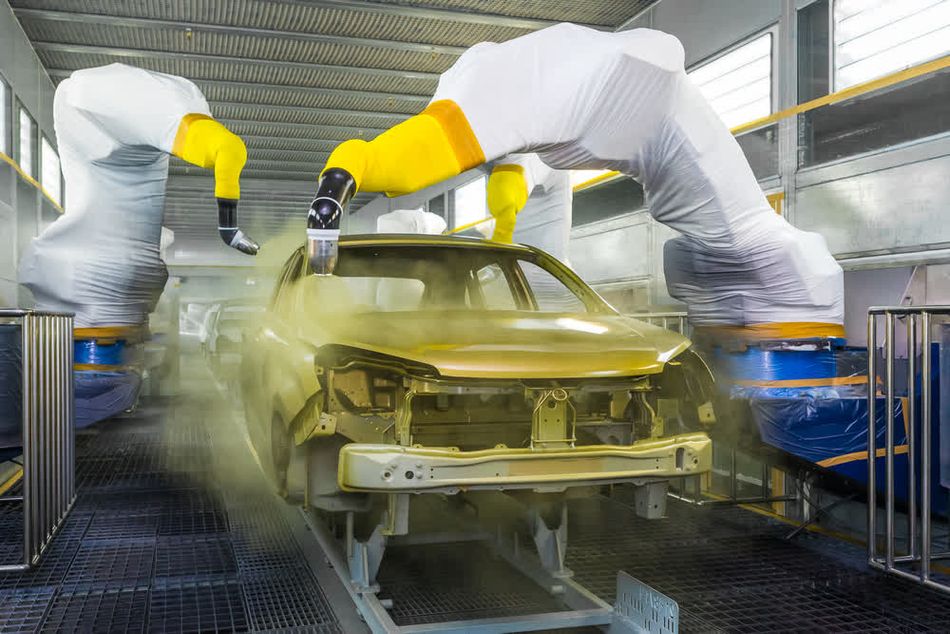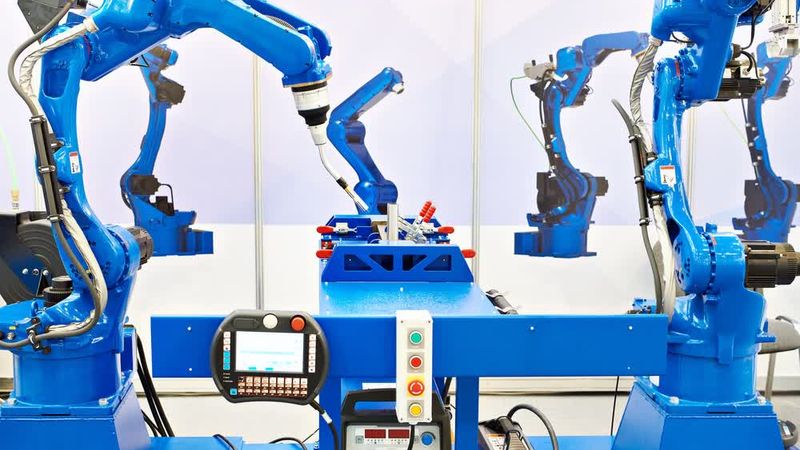What is a Six Axis Robot: Exploring the Versatile Powerhouse of Industrial Automation
Investigating the basics of six-axis robots, how they are structured, the key components, advantages and applications in the industrial sector
Introduction
A six axis robot is a sophisticated mechanical arm designed for industrial automation, capable of moving with six degrees of freedom. These robots can move along the x, y, and z axes, as well as rotate around these axes (roll, pitch, and yaw), mimicking the flexibility of a human arm. This exceptional range of motion allows six axis robots to perform complex tasks with precision and efficiency in various manufacturing processes.
From automotive assembly lines to electronics production, these versatile machines have revolutionized industrial automation. Their ability to handle intricate movements makes them ideal for tasks such as welding, painting, pick-and-place operations, and quality inspections. As key players in Industry 4.0, six axis robots significantly enhance productivity, consistency, and safety in modern manufacturing environments, adapting to diverse applications across multiple sectors.
Scrutinizing the Anatomy of a Six Axis Robot
Core Components
In robotics, the axis refers to the planes and dimensions that the robot can cover. Typically, each axis consists of one servo motor that allows the robot to perform rotational movements in each plane. In robotic terms, each servo is known as a ‘joint’.
Hence, a six axis robot is a complex machine composed of several key components that work together to provide its remarkable range of motion and functionality. The main parts of a sixaxis robot include the base, shoulder, elbow, wrist, and end effector.
Base
The base serves as the foundation of the robot, providing stability and housing the control systems. It’s also called the pedestal and it typically mounted on the floor allowing for rotational movement around its vertical axis.
Shoulder
The shoulder is connected to the base and forms the first movable joint of the robot arm. It enables the arm to lift and lower, providing vertical movement.
Elbow Joints
The elbow joint connects the upper arm to the forearm, allowing for extension and retraction of the arm. This component is crucial for reaching different points in the robot's work envelope.
Wrist
The wrist is a complex assembly usually consisting of three joints that provide roll, pitch, and yaw movements. These movements allow for precise orientation of the end effector.
End Effector
The end effector, often referred to as the "hand" of the robot, is the tool or device attached to the wrist. It can be customized for various tasks such as gripping, welding, or painting.
Each of these components may feature additional components like gears, belts, etc. that contribute to the robot's overall functionality by providing specific movements and capabilities. Together, they allow the six axis robot to perform complex tasks with precision and flexibility.

Component | Primary Function | Associated Axes |
Base | Stability and rotation | Axis 1 (Waist) |
Shoulder | Vertical arm movement | Axis 2 (Shoulder) |
Elbow | Arm extension/retraction | Axis 3 (Elbow) |
Wrist | End effector orientation | Axis 4 (Wrist Roll), Axis 5 (Wrist Pitch), Axis 6 (Wrist Yaw) |
End Effector | Task-specific operations | N/A (Utilizes all axes for positioning) |
This configuration allows the six axis robot to move freely in three-dimensional space, mimicking the flexibility of a human arm and enabling it to perform a wide range of complex tasks in industrial settings.
Structure and Design
Six axis robots feature an articulated design that mimics the structure of a human arm. This anthropomorphic configuration consists of a series of rotary joints connected by rigid links, allowing for a wide range of motion and flexibility. The articulated design enables these robots to reach around obstacles and approach work pieces from various angles, making them ideal for complex manufacturing environments.
Recommended Reading: The Motors Inside Autonomous Robots
The structure of a six axis robot allows for intricate movements by combining rotations around six different axes. Each joint contributes to the robot's ability to position and orient its end effector precisely in three-dimensional space. This design enables the robot to perform tasks that require dexterity and adaptability, such as welding curved surfaces or assembling complex components.
Compared to other types of industrial robots, six axis robots offer superior versatility.
SCARA robots , for instance, typically have four axes and are designed for planar movements, making them suitable for pick-and-place operations but limited in their ability to perform complex 3D movements.
Likewise, Cartesian robots, which move linearly along three perpendicular axes, excel in applications requiring straight-line movements but lack the flexibility of six axis robots for tasks involving irregular shapes or confined spaces.
Key structural features of six axis robots include:
Anthropomorphic design resembling a human arm
Six rotary joints providing six degrees of freedom
Rigid links connecting the joints for stability and precision
Compact wrist assembly for fine orientation control
Modular construction allows for customization and easy maintenance
Hollow wrist design for internal cable routing, reducing wear and interference
Counterbalancing mechanisms to improve energy efficiency and reduce motor loads
Robust base structure for stability and mounting options
This articulated structure, combined with advanced control systems, allows six axis robots to perform a wide array of tasks with high precision and repeatability, making them a cornerstone of modern industrial automation.
Suggested Reading: 6 Types of Automation: A Comprehensive Guide for Engineers
Decoding the Six Axes
Axis by Axis Breakdown
Six axis robots derive their exceptional flexibility from their ability to move along six distinct axes. Each axis contributes to the robot's overall range of motion, allowing it to perform complex tasks with precision.
Axis 1 (Base): Located at the bottom of the robot, this axis allows for rotational movement around the robot's vertical axis. It's often referred to as the "waist" and provides a sweeping motion that expands the robot's work envelope.
Axis 2 (Shoulder): Positioned at the base of the robot's arm, this axis enables the arm to move up and down. It provides the primary lifting motion and significantly influences the robot's reach.
Axis 3 (Elbow): This axis is located at the joint between the upper and lower arm segments. It allows the arm to extend and retract, working in conjunction with Axis 2 to position the wrist in the desired location.
Axis 4 (Wrist Roll): The first of three wrist axes, this allows the wrist to rotate clockwise or counterclockwise. This motion is crucial for orienting the end effector and is analogous to the rolling motion of a human wrist.
Axis 5 (Wrist Pitch): This axis enables the wrist to move up and down, providing a tilting motion. It's essential for adjusting the angle of approach of the end effector to the workpiece.
Axis 6 (Wrist Yaw): The final axis allows the wrist to rotate side to side. This motion, combined with the roll and pitch, gives the robot the ability to approach work from virtually any angle.
The first three axes (Base, Shoulder, and Elbow) are primarily responsible for positioning the robot's arm in three-dimensional space.
The last three axes (Wrist Roll, Pitch, and Yaw) provide the fine control necessary for orienting the end effector precisely.
Understanding these axes and their interplay is crucial for programming and operating six axis robots effectively. The complexity of motion afforded by these six axes allows these robots to perform intricate tasks in various industries, from automotive manufacturing to food packaging.
Kinematics and Motion Control
Kinematics is the branch of mechanics that describes the motion of points, bodies, and systems without considering the forces that cause them to move.
In the context of six axis robots, kinematics plays a crucial role in determining the position and orientation of the end effector based on the angles of each joint.
The combination of six axes in these robots allows for complex movements by providing six degrees of freedom. So, the end effector can be positioned at any point within the robot's work envelope and oriented in any direction. The robot's control system uses forward kinematics to calculate the position and orientation of the end effector based on the known angles of each joint.
For example, consider a simple two-dimensional case where we want to determine the position of the end effector (x, y) based on the angles of two joints (θ1 and θ2) and the lengths of two arm segments (L1 and L2). The equations for this would be:
x = L1 * cos(θ1) + L2 * cos(θ1 + θ2)$$ $$y = L1 * sin(θ1) + L2 * sin(θ1 + θ2)
In a six axis robot, these calculations become more complex, involving 3D space and rotational movements. The robot's control system must solve these equations in real-time to accurately position the end effector.
Role of Inverse Kinematics
Inverse kinematics is equally important in robot control. It involves calculating the required joint angles to achieve a desired end effector position and orientation, and it’s crucial for programming the robot to follow specific paths or reach particular points in space.
The kinematic chain of a six axis robot allows for redundancy in positioning, meaning there may be multiple joint configurations that result in the same end effector position. This redundancy can be leveraged to optimize movements, avoid obstacles, or work within joint limitations.
Advanced motion control algorithms use these kinematic principles to generate smooth, efficient paths for the robot to follow. They take into account factors such as velocity, acceleration, and deceleration to ensure precise and controlled movements. This level of control enables six axis robots to perform complex tasks with high accuracy and repeatability across various industrial applications.
Functionality and Operation
Programming and Control Systems
Six axis robots are sophisticated machines that require precise programming and control systems to perform their tasks effectively. The programming of these robots involves defining the specific movements, actions, and sequences they need to execute.
Teach Pendants
One common method of programming six axis robots is through the use of a teach pendant. This handheld device allows operators to manually guide the robot through desired movements, recording each point and action. The robot can then replicate these movements precisely during operation. Teach pendants are particularly useful for programming complex paths or when frequent reprogramming is necessary.

Offline Programming
Offline programming is another widely used method, especially for large-scale operations. This approach involves using specialized software to create and simulate robot programs on a computer, away from the physical robot. Offline programming reduces the downtime and enables path optimization before implementation, and the capability to program multiple robots simultaneously.
Robotic Controllers
Controllers play a crucial role in the operation of six axis robots. These are essentially the "brains" of the robot, translating programmed instructions into precise motor movements. Modern controllers use advanced algorithms to handle complex calculations for motion planning, kinematics, and dynamics in real-time.
Sensors
Sensors are integral to the functionality of six axis robots, providing vital feedback to the control system. They can include:
Position sensors in each joint to track the robot's exact configuration
Force sensors to detect and respond to external forces
Vision systems for object recognition and precise positioning
Proximity sensors to avoid collisions with obstacles
Suggested Reading: Types of Sensors in Robotics
The combination of sophisticated programming methods, advanced controllers, and a network of sensors enables six axis robots to perform complex tasks with high accuracy and repeatability. This level of control and flexibility makes them invaluable in various industrial applications, from automotive manufacturing to aerospace assembly.
End Effectors and Tooling
End effectors are the specialized tools attached to the end of a six axis robot's arm, designed to interact directly with the work environment. These devices are crucial in determining the specific tasks a robot can perform and greatly enhance its versatility. End effectors act as the "hands" of the robot, allowing it to manipulate objects, perform operations, and interact with its surroundings in various ways.
The choice of end effector significantly impacts a robot's functionality. For instance, a gripper end effector enables a robot to pick up and manipulate objects, making it suitable for assembly or material handling tasks. Welding torches, on the other hand, allow robots to perform precise welding operations in manufacturing settings. Suction cups are ideal for handling smooth, flat surfaces in packaging or logistics applications.
End effectors extend the functionality of six axis robots by allowing them to adapt to different tasks without changing the entire robot. This flexibility is particularly valuable in manufacturing environments where production requirements may change frequently. The following table compares different types of end effectors and their applications:
End Effector Type | Description | Applications |
Gripper | Used for holding and manipulating objects | Assembly, packaging, material handling |
Welding Torch | Used for welding materials together | Metal fabrication, automotive manufacturing |
Suction Cup | Used for picking up smooth surfaces using suction | Warehouse automation, pick-and-place operations |
Tool Changer | Allows for quick interchange of tools | Flexible manufacturing systems |
Spray Nozzle | Used for applying coatings or paints | Paint spraying, coating applications |
Applications and Advantages
Industrial Applications
Six axis robots have revolutionized numerous industries with their versatility and precision. These robotic systems are capable of performing a wide array of tasks, making them indispensable in modern manufacturing and production environments.
Automotive Industry
In the automotive industry, six axis robots play a crucial role in various stages of vehicle production. They are employed in body-in-white assembly, where they perform spot welding to join car body panels. These robots also excel in painting applications, providing consistent and high-quality finishes to vehicle exteriors. Additionally, they are used for tasks such as windshield installation, engine placement, and final assembly operations.

Electronic Assembly
The electronics industry heavily relies on six axis robots for their precision and speed. These robots are utilized in the assembly of delicate components, such as circuit boards and mobile devices. They perform tasks like pick-and-place operations, soldering, and quality inspection with remarkable accuracy. The ability of six axis robots to work in confined spaces makes them ideal for handling intricate electronic components.
Suggested Reading: Pick and Place Robots: An In-Depth Guide to Their Functionality and Applications
Aerospace Manufacturing
Aerospace manufacturing benefits greatly from the capabilities of six axis robots. These robots are employed in the production of aircraft components, performing tasks such as drilling, riveting, and composite layup. Their precision is particularly valuable in the assembly of large structures like fuselages and wings, where accuracy is paramount.
Beyond these industries, six axis robots find applications in various other sectors. In the food and beverage industry, they are used for packaging, palletizing, and handling delicate food items. In the pharmaceutical sector, these robots assist in the precise handling of medications and laboratory samples.
Common applications of six axis robots include:
Welding (arc welding, spot welding, laser welding)
Painting and coating
Assembly and disassembly
Material handling and machine tending
Cutting and trimming
Inspection and quality control
Packaging and palletizing
Polishing and deburring
Dispensing and sealing
3D printing and additive manufacturing
Top Advantages of Six-Axis Robots
While there are several advantages of six axis robots in the industrial sector, here are some of the major benefits of these automation systems:
High Dexterity Levels
6-axis robots excel in tasks requiring a high degree of dexterity and flexibility. Their six axes of motion enable them to maneuver around obstacles and reach into confined spaces with ease. This versatility is comparable to the flexibility of a human arm, making it well-suited for applications that demand precision and agility.
High-Precision Levels
The additional axes of a 6-axis robot provide precise control and movement. They can perform delicate tasks like grasping, placing, and manipulating objects with remarkable accuracy. This precision is crucial for applications with tight tolerances, such as electronics assembly, biomedical device manufacturing, and quality inspections.
Near-Zero Interference
Compared to articulated robots with fewer axes, 6-axis robots have a smaller footprint and occupy less space on the production floor. Their compact design and 360-degree rotating joints allow them to operate in confined areas without interfering with other equipment or robots. This minimizes space requirements in automated production facilities.
High Productivity
The combination of flexibility, precision, and minimal interference enables 6-axis robots to perform tasks faster and more efficiently than other robot types. Their ability to work continuously without frequent repositioning maximizes productivity.
Conclusion
Six-axis robots have revolutionized industrial automation by offering the precision and flexibility of a human arm. With their ability to move in six directions, these robots can perform complex tasks with high accuracy and consistency. They are essential in industries like automotive, electronics, and aerospace, improving production efficiency and quality.
In the future, six-axis robots are expected to become even more advanced. Developments like AI integration, enhanced sensors, and increased human-robot collaboration will further expand their capabilities and applications, making them an indispensable tool in the world of manufacturing and automation.
Frequently Asked Questions
What makes a six axis robot different from other types of industrial robots?
Six axis robots have six degrees of freedom, allowing them to move in six different directions. This gives them greater flexibility and range of motion compared to other robot types, enabling them to perform more complex tasks and reach difficult angles.
What are some common applications of six axis robots?
Six axis robots are widely used in welding, painting, assembly, material handling, and quality inspection. They are particularly prevalent in automotive manufacturing, electronics assembly, and aerospace industries.
How are six axis robots programmed?
Six axis robots can be programmed using various methods, including teach pendants for manual guidance and recording of movements, and offline programming software for creating and simulating robot programs on a computer.
What are the main advantages of using six axis robots in industrial settings?
The key advantages include flexibility to perform various tasks, high precision in complex movements, improved efficiency and productivity, and the ability to work continuously without breaks. They also contribute to enhanced product quality and reduced human error.
Can six axis robots work alongside humans?
Yes, with advancements in safety features and sensing technologies, many six axis robots can work collaboratively with humans in shared workspaces. These are often referred to as collaborative robots or "cobots," and they are designed to operate safely in close proximity to human workers.
References
Table of Contents
IntroductionScrutinizing the Anatomy of a Six Axis RobotCore ComponentsBaseShoulderElbow JointsWristEnd EffectorStructure and DesignDecoding the Six AxesAxis by Axis BreakdownKinematics and Motion ControlRole of Inverse KinematicsFunctionality and OperationProgramming and Control SystemsTeach PendantsOffline ProgrammingRobotic ControllersSensorsEnd Effectors and ToolingApplications and AdvantagesIndustrial ApplicationsAutomotive IndustryElectronic AssemblyAerospace ManufacturingTop Advantages of Six-Axis RobotsHigh Dexterity LevelsHigh-Precision LevelsNear-Zero InterferenceHigh ProductivityConclusionFrequently Asked QuestionsReferences
